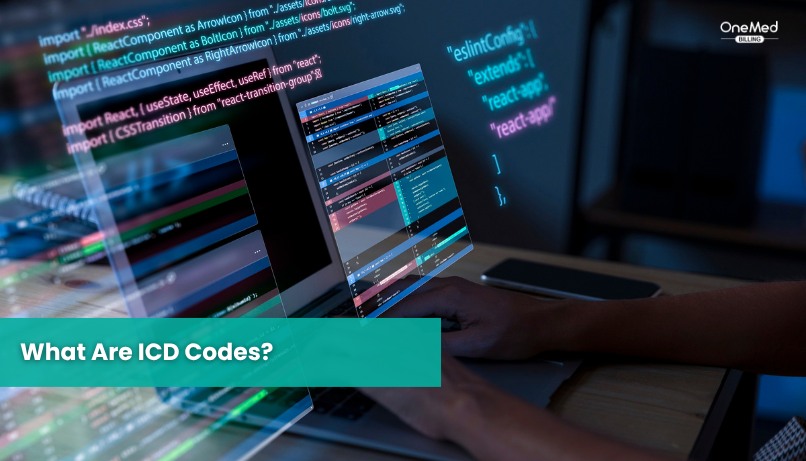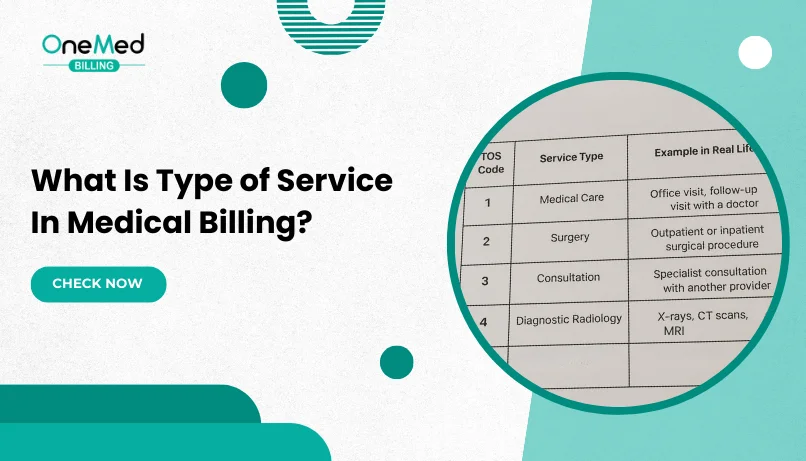What's the Difference Between CPT and ICD Codes?
- August 4, 2025
- 0 Comments
- Medical Coding
In the world of healthcare billing, precision is everything. Whether you’re a medical coder, healthcare provider, or billing company, using the right codes ensures accurate reimbursements and keeps your revenue cycle running smoothly. Two of the most important types of codes used in this process are CPT and ICD codes.
Although both are crucial, they serve very different purposes. Mixing them up or applying them incorrectly can lead to rejected claims, delays in payment, and even compliance issues. In this guide, we’ll break down the difference between CPT and ICD codes, when to use each, and how they work together.
Summary
CPT and ICD codes are both essential in medical billing, but they serve different purposes. CPT codes describe the procedures or services a provider performs (the "what"), while ICD codes explain the diagnosis or reason for the visit (the "why"). CPT codes are numeric and maintained by the AMA, whereas ICD codes are alphanumeric and maintained by WHO and CDC. Both codes are required on insurance claims to support medical necessity and ensure correct reimbursement. This blog explains the differences in detail, how they work together, and common coding mistakes to avoid.
What Are CPT Codes?

CPT stands for Current Procedural Terminology. These codes are created and maintained by the American Medical Association (AMA). CPT codes are used to describe the medical, surgical, and diagnostic procedures or services a healthcare provider performs.
In short, CPT codes answer the question: What service or treatment did the provider give?
They are standardised five-digit numeric codes used across the United States in medical billing. These codes appear on patient records and claim forms and are submitted to insurance companies to request payment for the services performed.
Types of CPT Codes:
1. Category I – Most commonly used codes (e.g., office visits, surgeries, radiology).
2. Category II – Supplemental tracking codes used for performance measurement.
3. Category III – Temporary codes for emerging technologies or experimental procedures.
Example:
• 99213: Office or outpatient visit for an established patient, typically lasting 15 minutes.
This code tells the insurance company that a moderate-complexity check-up was done.
What Are ICD Codes?

ICD stands for International Classification of Diseases, developed by the World Health Organization (WHO). In the United States, we use a clinical version called ICD-10-CM (Clinical Modification), which is maintained by the Centers for Disease Control and Prevention (CDC) and Centers for Medicare & Medicaid Services (CMS).
ICD codes are used to document the patient’s diagnosis, condition, or reason for the medical visit.
E11.9: Type 2 diabetes mellitus without complications.
This tells the payer that the patient was treated for diabetes, which supports the medical need for associated procedures.
Key Differences Between CPT and ICD Codes
Here’s a clear comparison table that highlights the main distinctions between these two types of codes:
|
Feature |
CPT Codes |
ICD Codes |
|
Full Form |
Current Procedural Terminology |
International Classification of Diseases |
|
Purpose |
Describes procedures and services |
Describes diagnosis and condition |
|
Maintained By |
American Medical Association (AMA) |
WHO / CDC / CMS |
|
Format |
5-digit numeric code |
Alphanumeric (3 to 7 characters) |
|
Use Case |
Tells what was done to the patient |
Explains why the service was performed |
|
Example |
93000 (ECG routine with interpretation) |
I10 (Essential hypertension) |
Why Are Both Codes Needed?
CPT and ICD codes work together to tell the full story of a patient’s visit. Submitting only one or using the wrong combination can result in denied claims or underpayment.
Think of it this way:
• ICD code = The diagnosis or reason for the visit
• CPT code = The service performed to address that diagnosis
Example:
Let’s say a patient comes in for a blood sugar check related to their diabetes:
• ICD Code: E11.9 (Type 2 diabetes)
• CPT Code: 82947 (Glucose test, quantitative)
The ICD code justifies why the glucose test was needed, and the CPT code bills for the actual test.
This pairing is essential for insurance claim approval, medical necessity validation, and audit readiness.
Real-Life Example: How CPT and ICD Codes Work Together
Let’s take a real-world scenario to show how both codes play a role.
A 55-year-old patient visits their primary care doctor with high blood pressure. The doctor performs a standard office visit, checks vital signs, and adjusts medication.
- ICD Code: I10 (Essential hypertension)
- CPT Code: 99214 (Office visit for an established patient, 25 minutes)
In this claim:
- The ICD code explains the patient’s condition.
- The CPT code details the service provided during the visit.
Without the ICD code, the payer wouldn’t know why the visit was necessary. Without the CPT code, the insurer wouldn’t know what was done. Both are required to get the claim processed and paid correctly.
Common Mistakes When Using CPT and ICD Codes

Medical coding errors are one of the top reasons for claim denials and delayed payments. Here are some frequent issues to watch out for:
1. Mismatch Between ICD and CPT
If the diagnosis code doesn’t support the service performed, insurance may flag it as medically unnecessary and reject the claim.
2. Using Outdated Codes
Both CPT and ICD codes are updated annually. Using old codes can lead to rejections.
3. Not Using Specific Codes
ICD-10-CM has very detailed codes. Choosing a generic or unspecified one when a more specific code is available can reduce payment or cause denials.
4. Incorrect CPT Modifiers
Modifiers are two-digit additions to CPT codes that give extra details (like if a procedure was repeated or done on the left vs right side). Incorrect use can lead to audits or errors.
How to Stay Updated on Code Changes
To keep up with changes in coding systems, you should:
- Check the AMA website every year for CPT updates (usually published in the fall for use from January).
- Visit CMS.gov or CDC.gov for ICD-10-CM updates, which go into effect each October.
- Use certified coding tools and software that alert you to discontinued or revised codes.
- Join coding webinars or newsletters to stay current.
Healthcare billing is a fast-changing field. Using outdated or incorrect codes can lead to costly mistakes.
Why This Matters in Revenue Cycle Management
For healthcare providers and medical billing companies, understanding the difference between CPT and ICD codes isn’t optional. It’s central to successful Revenue Cycle Management (RCM).
Accurate coding means:
- Faster payments
- Fewer claim rejections
- Lower audit risk
- Better compliance with insurance rules
If your practice is struggling with coding errors or reimbursement delays, outsourcing your coding or billing may help.
Conclusion
CPT and ICD codes serve different but equally essential roles in healthcare billing. CPT codes explain what service was provided, while ICD codes explain why it was needed. Both are required on claims to justify medical necessity and secure proper payment.
Learning how these codes work, avoiding common mistakes, and staying updated with changes are key steps in ensuring accurate billing and financial stability for your practice. For a full breakdown of the basics, coding rules, and practical examples, see our detailed guide on medical coding. Whether you’re a new medical coder, a clinic manager, or an independent provider, understanding the difference between CPT and ICD codes will help you navigate the billing world with confidence.
Many providers rely on medical coding services to handle this complexity and reduce the risk of errors that could delay reimbursements.
Frequently Asked Questions
Find quick answers to common questions about this topic, explained simply and clearly.
Can a claim be submitted with only an ICD code?
No. A claim must include both an ICD code and a CPT code. The ICD code shows the diagnosis, and the CPT code bills for the procedure or service.
Who assigns CPT and ICD codes?
Usually, a certified medical coder or billing specialist assigns these codes based on the provider’s documentation.
Are these codes used outside the United States?
ICD codes are used globally. CPT codes, however, are primarily used in the United States and some parts of Canada.
What happens if the codes don’t match?
Claims may be denied if the ICD and CPT codes do not align properly or do not support medical necessity.
Is it possible to outsource medical coding?
Yes. Many clinics and hospitals outsource coding to reduce errors and improve reimbursement rates.







Comments (0)